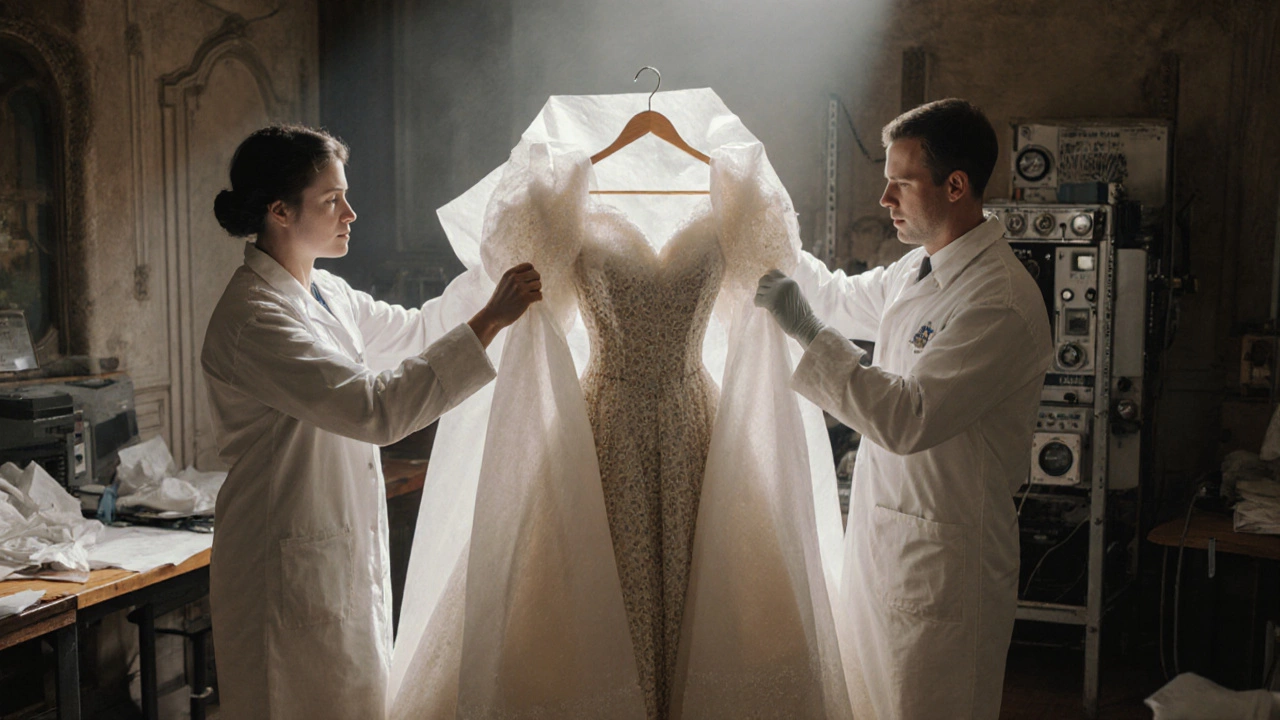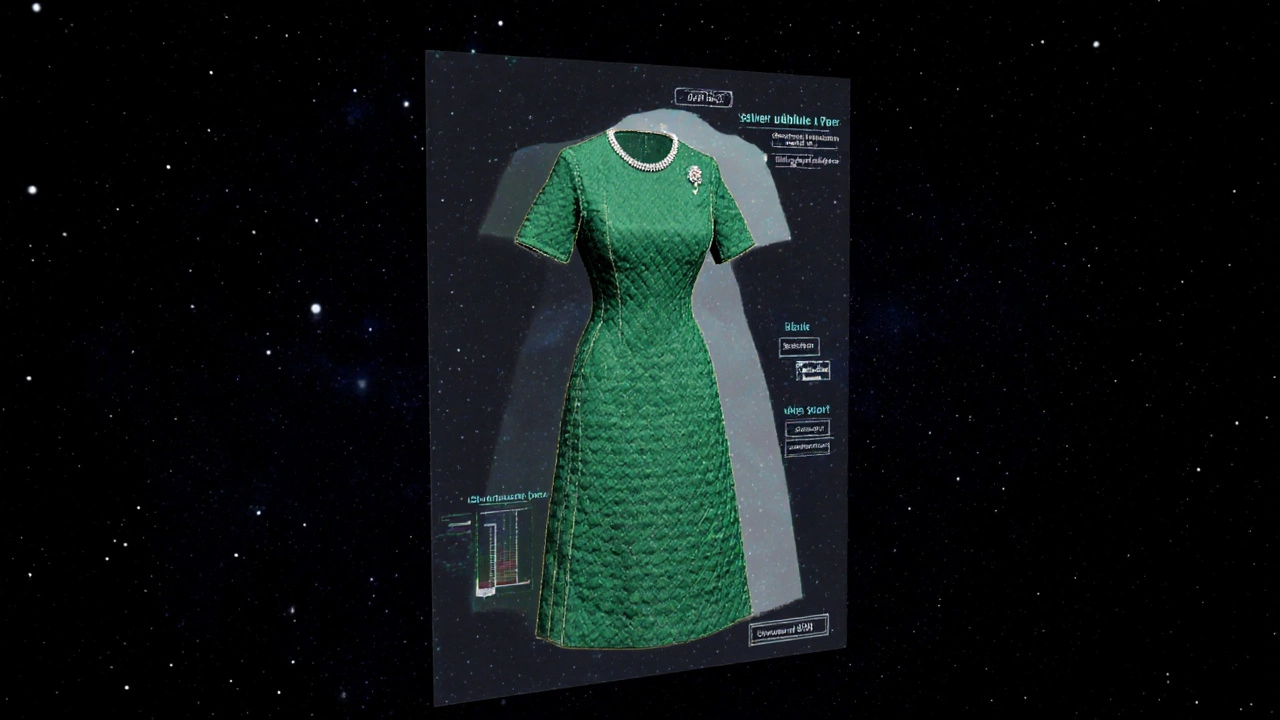
Based on the article, Queen Elizabeth II's wardrobe was a model of sustainability with items worn for decades. Compare this to modern fast fashion practices to see the environmental impact difference.
Calculated based on average modern fashion consumption vs. Queen Elizabeth's sustainable wardrobe
Did you know? According to the article, Queen Elizabeth's wardrobe was a model of sustainability with items worn for decades. This contrasts sharply with the fashion industry's current rate of production—where clothing production now contributes to 10% of global carbon emissions.
When Queen Elizabeth II passed away in September 2022, the world didn’t just lose a monarch-it lost a woman whose wardrobe told the story of seven decades of British history. Her clothes weren’t just fabric and thread. They were symbols of duty, diplomacy, and tradition. But what happened to them after she died? The answer isn’t simple, and it’s not what most people expect.
Queen Elizabeth owned over 5,000 outfits during her reign. Each one was carefully chosen-not for fashion trends, but for meaning. A bright blue coat meant visibility at a public event. A specific hat signaled respect at a funeral. A dress in the colors of a Commonwealth nation was a quiet act of diplomacy. Her wardrobe was a tool, not a statement. And every piece was made to last. Designers like Norman Hartnell, Angela Kelly, and Stewart Parvin worked with her for years, knowing she’d wear the same coat for 20 years if it still fit.
Her clothes were rarely thrown away. Even damaged items were repaired, repurposed, or restyled. A 1950s gown might become a 1980s jacket. A hat from the 1970s could be retrimmed with new feathers in the 2000s. This wasn’t just frugality-it was a philosophy. In a world of fast fashion, her wardrobe stood as a counterpoint: quality over quantity, reuse over replacement.
After her death, the Royal Collection Trust took full control of her personal effects-including her clothing. Unlike celebrity wardrobes that go to auction or museums, the Queen’s clothes were never sold. They were preserved as part of the Royal Collection, which is held in trust for the nation. That means they belong to the public, not the royal family.
Some pieces were immediately moved to the Royal Archives at Windsor Castle. Others went to the Royal Collection’s textile conservation studio, where experts cleaned, stabilized, and documented each item. This isn’t just storage-it’s historical preservation. A dress worn during the 1953 coronation is treated like a painting in the National Gallery. Temperature, humidity, and light are controlled to prevent fading or decay. Even the hangers are custom-made to avoid stretching the fabric.

One of the most common questions is: Did Kate Middleton or Meghan Markle inherit her clothes?
The answer is yes-but not in the way you think. The Queen’s personal wardrobe wasn’t handed down like family heirlooms. Instead, her staff carefully selected pieces that could be reused for official duties. For example, the Queen’s favorite navy blue coat with gold buttons was later worn by Queen Camilla at a 2023 event. A 1990s cream silk dress, originally worn by the Queen to open Parliament, was restyled and worn by Princess Anne in 2024.
These aren’t random hand-me-downs. They’re strategic. Wearing a piece from the Queen’s collection sends a message: continuity, respect, and connection to the past. The royal household doesn’t waste anything. Even the fabric scraps from alterations are saved for future repairs.
Not every item was kept. Some pieces were too worn, too dated, or too personal to reuse. Those were handled with quiet dignity. Items that couldn’t be preserved were donated to charity-usually through trusted organizations like the Royal British Legion or local women’s shelters. But this wasn’t publicized. The royal family avoids publicity around donations. These acts were done quietly, as the Queen would have wanted.
Some outfits were given to dressmakers who worked with her for decades. These women, many of whom had been with the royal household for over 30 years, were allowed to keep a single garment as a token of appreciation. One seamstress received a pair of gloves the Queen wore to a garden party in 2010. Another got a silk scarf from a 1988 state visit to Japan.

Yes-but not all at once, and not always. The Royal Collection occasionally puts selected royal garments on display. In 2023, the ‘Queen’s Wardrobe’ exhibition opened at Buckingham Palace, featuring 35 outfits worn between 1952 and 2022. Visitors could see the same emerald green dress she wore during her Silver Jubilee, the same pearl necklace she wore at her wedding, and the same coat she wore to her final public engagement in Balmoral.
These exhibits rotate every 18 months. Why? Because textiles are fragile. Even with the best conservation, light and air damage fabric over time. A dress displayed for too long can fade. A hat can lose its shape. So pieces are rotated, stored, and given time to rest.
There’s also a digital archive. High-resolution photos and 3D scans of key items are available to researchers through the Royal Collection’s online portal. Historians, fashion students, and textile experts can study the stitching, fabric weight, and dye composition without ever touching the original.
It matters because the Queen’s wardrobe is one of the last great examples of sustainable fashion on a global scale. In a time when the fashion industry produces 10% of the world’s carbon emissions, her approach was the opposite: make it once, make it well, wear it often.
Her clothes didn’t just reflect her role-they defined it. They showed that dignity doesn’t require newness. That tradition isn’t outdated-it’s intentional. And that legacy isn’t built by buying more, but by using less.
When you look at a Queen Elizabeth dress today, you’re not just seeing fabric. You’re seeing a lifetime of service. A dress that survived 70 years isn’t just fashion. It’s history you can wear.
No, none of Queen Elizabeth’s personal clothing was sold. All items were transferred to the Royal Collection Trust, which preserves them as part of the national heritage. The royal family does not profit from or auction off royal garments.
Yes, but only through temporary exhibitions. The Royal Collection occasionally displays selected pieces at Buckingham Palace, Windsor Castle, or the Palace of Holyroodhouse. These exhibits rotate every 18 months to protect the textiles from light damage. High-resolution digital versions are also available online for researchers.
They didn’t inherit them outright, but they do wear selected pieces for official duties. The royal household carefully chooses garments from the Queen’s collection that are appropriate for current events. For example, Queen Camilla has worn several of the Queen’s coats and hats, and Princess Anne has reused dresses from the 1980s and 1990s.
Each garment is cleaned, stabilized, and stored in climate-controlled archives. Experts use acid-free tissue, custom hangers, and low-light conditions to prevent fading or decay. Some items are scanned in 3D for digital preservation. Only a small number are displayed at a time to protect the fabric.
Yes, but quietly. Items that were too worn, damaged, or unsuitable for preservation were donated to charities like the Royal British Legion or local women’s shelters. These donations were never announced publicly, in keeping with the Queen’s preference for private acts of kindness.
Write a comment